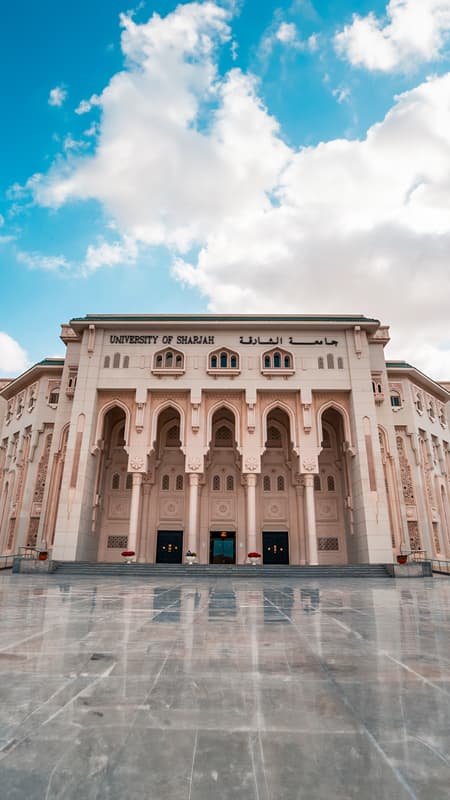Fine Arts and Design wins awards for Arabic typography artistry
The College of Fine Arts and Design has won three awards for the outstanding skill and flair of the Arabic calligraphy pieces showcased at an international typography design competition.
The awards were granted by the Society of Typographic Arts (STA) 100competition and picked up by Assistant Professor Nada Abdallah.
The society, established in 1927, launches its international competition every year in which it honors the best 100 examples of typographic excellence from artists around the globe.
In the years since its founding, the society has played a vital role in activities brought together by the Chicago design community in the U.S. and beyond.
Abdallah snatched her first award for an Arabic Calligraphic design dubbed “Back to Alif." Sponsored by the Sharjah Calligraphy Bienniel, the fascinating typographic artwork is something like an itinerary into the history and letterforms of the Arabic script.

Designed digitally, the piece explores the evolution of various variations of the Kufic Arabic calligraphic styles, creating a sequential narrative spanning the history of an art which for millions of Arabs and Muslims borders on sanctity.
'Alif' is the first letter of the Arabic Alphabet, however it frames different concepts as it is the first letter of the name 'Allah', thus signifying God, the only one, the first, the Beginning and the Last.
"The artwork demonstrates the possibility of spawning new Kufic styles using the latest media, digital design and technology. It centers on the linear development of the Alif of the Kufic calligraphic style and how current technology enables us to generate new selections of calligraphy landscapes and narrative forms," says Abdallah.
A graphic designer, type designer and educator, Abdallah's artwork is of a challenging nature. Since joining CFAD in 2019, she has produced masterpieces some of which currently adorn public buildings and galleries in the United Arab Emirates (UAE).
Her second contribution to the STA 100 competition, for which she garnered her second trophy, crosses conventional typographic styles and composition.
Called “Isolated Letterforms Connected", the artwork masterfully utilizes the magnificence of the Kufic script to draw on contemporary issues. The piece, though experimental, it captures attention, offering viewers a striking visual chance to contemplate contemporary and divisive social issues.

STA 100 is reputed for its ability to bring together a panel of distinguished judges to assess entries vying for its tempting prizes, and the competition had attracted more than 400 entries from artists across the world.
This particular contribution by Abdallah captured the jury's attention, with one of the judges, Nermin Moufti, saying "the lettering is quite strong and very technically hard to achieve. I was drawn to it graphically and conceptually, but being able to create letters that are inspired by the Kufic calligraphic Script and translate them so seamlessly into the digital environment ... is remarkable."
Abdallah's third award was for a poster titled “SOS". The artwork draws on the themes of the U.N. Climate Change Conference, COP28, held in the UAE in December.
Of the poster, Abdallah says, it is a “poignant call" to action on climate change. The poster's bilingual font and pixel-style mosaic graphics converge to convey a powerful message of urgency and hope.
She adds: “Using a custom bilingual font (Arabic and Latin) created specifically for this project, the graphics are created using the pixel style mosaic to defragment the fragments, utilizing a restrained color palette to emphasize the message."

STA100 jury of distinguished industry professionals bring unrivalled expertise to the event and their selection of the winners. The panel comprises 100 judges with each conferring one prize.
Judge Moufti, sharing her experience of the process of selecting a winner, writes on Instagram: “We had a super generative discussion about our selections and common themes in this year's submissions. It was deeply moving to see a big number of projects that spoke to issues around the collective human condition caused by racism, the military-industrial complex, late-stage capitalism, and settler colonialism, to name a few."
On the decision to present Abdallah with an award for her artwork, Moufti notes that the poster earned accolades because as a judge she sees it as constituting a rich source of a “great example of the role of design in eliciting critical consciousness."
Abdallah says that she initially was hesitant to submit her work. It was only her passion for Arabic design heritage that drove her to do so.
“I thought why not, it's good to win and compete in a healthy way with other professional practitioners and professors from all over the world in competitions on the international scale.
"We are our own cultural ambassadors," Abdallah goes on, echoing the sentiment of preserving and promoting Arabic calligraphy and Islamic art.
“And I am an Arabic designer carrying a message of our own ancestors who created the treasures in the Arabic Calligraphy and Islamic Art."
Asked whether she thinks the awards would further her career, Abdallah says: “I would say my career is providing me the professional platform to make research and create work that is up to date in the age where the human creation is challenged by the intelligence of human made machines.
“Exposure is very important because it creates visibility. And visibility is putting yourself on the map."

